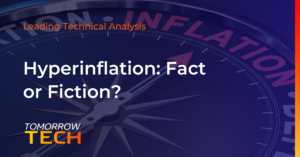Crypto goes from fringe to cringe as regulators rein in the radical asset class. There’s an irony in the world of crypto assets. If you remember, Bitcoin – the first crypto – was invented as a direct and competitive response to the forces of “centralized oppression” that, presumably, regulators, governments, central banks, and especially fiat currency itself, represented.
The 1988 Crypto Anarchy Manifesto by Timothy C. May was the first volley of what became a reality in 2009, rising from the ashes of the global financial crisis. Thousands of other cryptos soon entered the fray with a big finger aimed at authority – most (if not all) of them, driven by the same anarchistic spirit.
Fast forward to today. Now, mainstream investors want a share of the fashionable excitement in the same way squarish customers want to buy old Sex Pistols and other punk band T-shirts sold at your local apparel store—kind of “punk” but in a “palatable,” and hence cringy, way.
And so the Securities and Exchange Commission is undergoing an effort, led by Chair Gary Gensler, to make these assets “safer” (read: sanitized) for mainstream consumption. See the weirdness in all of this? It’s cool to sport something born out of a fringe and rebellious spirit as long as it’s within the rules of fashionable society and acceptable by even your grandparent’s standards.
Interestingly, the crypto spectrum —Bitcoin (BTC/USD) and Ethereum (ETH/USD)—is far outperforming the broader market and even gold itself, year to date. ETH leads the pack up 403%, with the “OG” BTC trailing 83%. The S&P 500 index (SPX) is chugging along at 18.5%, while the Aussie/Greenback is down for the year -4%. The worst performer of them all is gold, the traditional safe haven, down -7%.
Bearish from the Core?
Wall Street ended another down week, with the broader US stock market declining a modest half percent, more or less. The unexpected 0.7% retail sales surprise wasn’t enough to buoy market sentiment as Delta variant cases and monetary tightening loomed on the horizon.
According to CFRA, cited in a recent CNBC report, the movements within the main US indices are worth paying attention to. We tend to look at indices as a whole, but we hardly pay attention to the components that make them up. Around 15% of the S&P 500 index components are below 20% from their 52-week highs. For the S&P 500 midcaps, that number swells to 30%. And for the S&P small cap, it gets even more alarming at 48%. The state of the broader US market indicating weakness in the quarters to come? We’ll have to wait and see.
Economic News Watch
Central bank announcements tend to dominate economic news, but they literally take up nearly the entire schedule next week. It kicks off with Monday’s RBA meeting minutes, followed by the US FOMC meetings, interest rate decision, and post-meeting announcements.
Peppered in between are data on US housing. All eyes are on central banks, and the market may be a bit sensitive to any details regarding tapering and interest rate hikes. It’s also September, and its aura of seasonally bearish expectations appear to be materializing amid the current state of monetary suspense.
Gold Doesn’t Dilute Itself to Benefit the Public
Gold may not be the most “popular” investment right now, but again, unlike the kings and queens of “fiat currency,” King Midas was never much of a people pleaser. The proverbial “ruler” (as in king and measure) never dilutes assets to serve the greater good. Instead, the public tends to seek permission back into the kingdom in times of economic folly and distress.
Gold is down 16% year over year. And last week’s performance added to the gloomy fog that’s dimming its lustre. But again, it’s about patience and taking the long view.
A 12-month downtrend is a “trend,” but it’s a potential correction when compared to a 36-month bull run. Gold is currently at $1,751.00, which coincides with its uptrend line [1]. Will it hold? A better question: does it really matter if it doesn’t?
The 3-year bull run is under threat if prices reach and fail to bounce back below the 61.8% Fibonacci retracement line around $1,500. There’d have to be a solid fundamental reason for this to happen. But again, if you’re a “sound money” proponent or a straight-up gold bug, might it be a potential opportunity to accumulate more of the Midas metal?
Bear in mind; the gold-silver ratio is currently around 78—a few points above the “new” average (20th-century average is about 40). A drop below might signal a favourable opportunity to rebalance your gold and silver asset mix.







